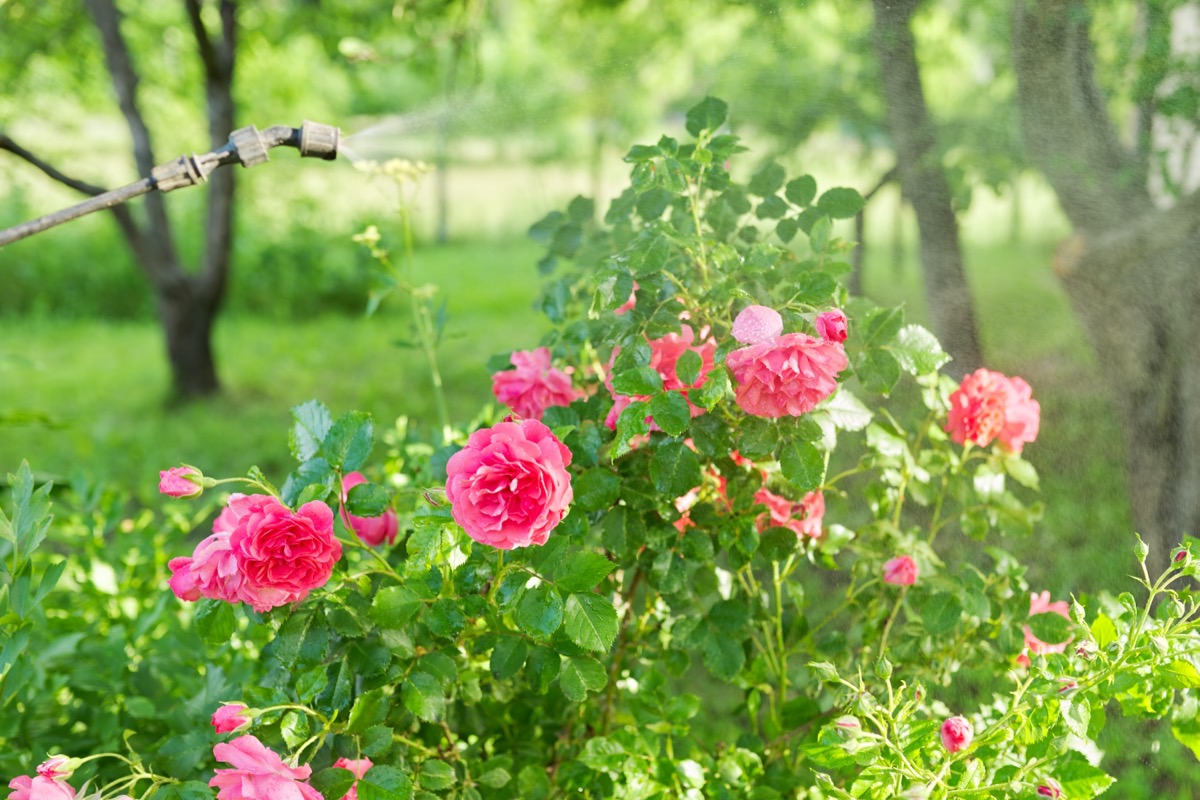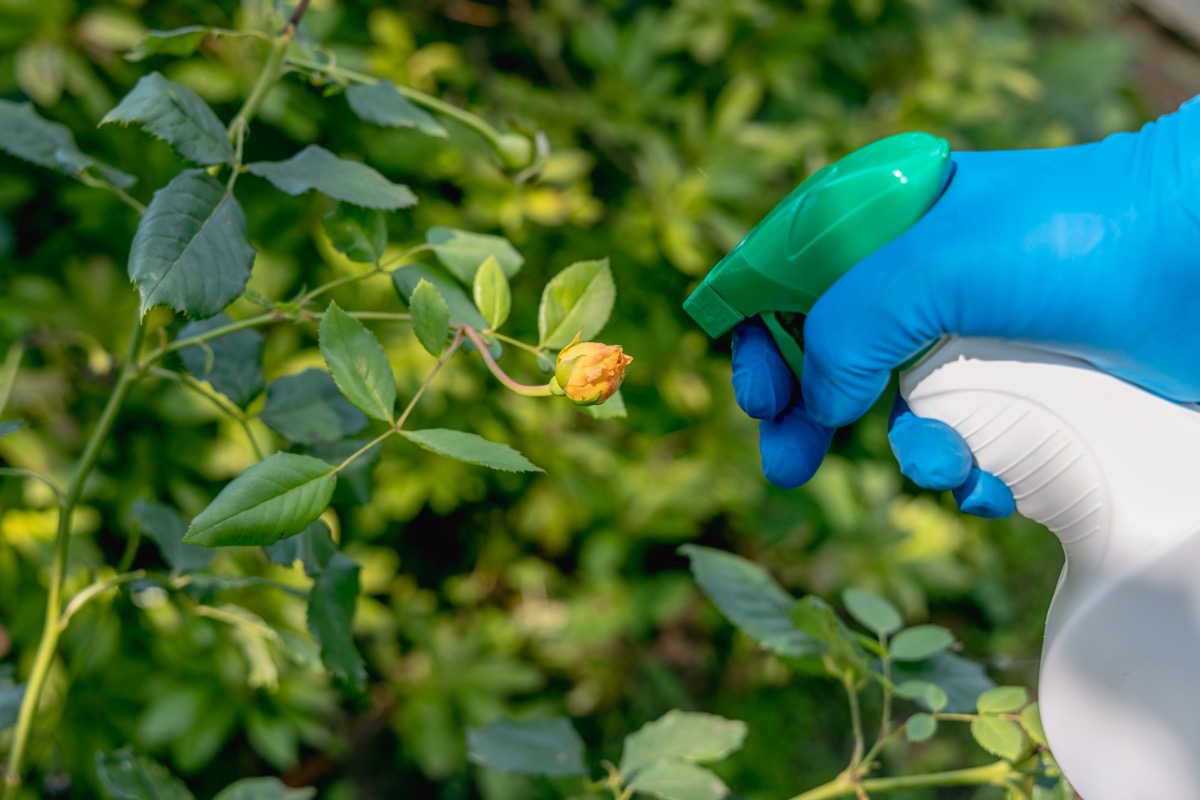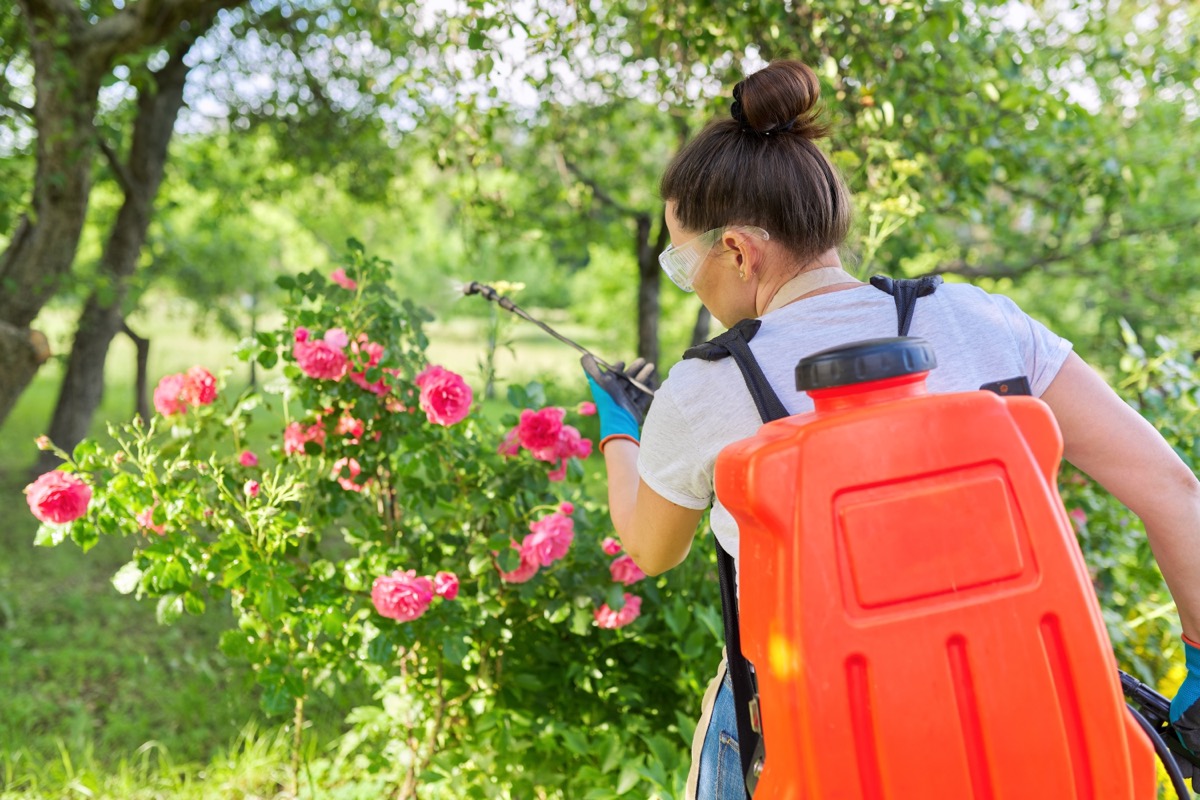Black spot is a common fungal disease that affects roses, caused by the fungus Diplocarpon rosae. The disease is characterized by the development of circular, black spots on the leaves of roses, which can quickly spread to other parts of the plant. As the disease progresses, the leaves will turn yellow and drop off, weakening the plant and making it vulnerable to other infections.

Black spot thrives in cool, moist weather conditions and can be particularly prevalent in areas with high humidity or frequent rainfall. It is a major problem for rose growers and can severely impact the health and aesthetics of rose bushes.
Blackspot Management in Rose
The Disease Cycle of Black spot
- Overwintering: The disease overwintered in diseased canes and infested fallen leaves, which are a source of infection for the next growing season.
- Spring emergence: In the spring, the fungal spores germinate and are disseminated by splashing water. The wind, insects, or other means may also carry the spores.
- Infection: Fungal spores on the leaf surface must be continuously wet for at least seven hours for infection. Once the infection is established, the fungus will develop fruiting bodies called acervuli in black lesions, which produce spores that can spread the disease to new tissue.
- Spore production: As the disease progresses, the acervuli continue to produce spores that can splash to new tissue, spreading the disease further. The wind, insects, or other means may also carry the spores.
- Overlapping cycles: As the season progresses, multiple cycles of infection and spore production can occur, leading to increased disease severity and potential for further spread.
- Winter dormancy: At the end of the growing season, the fungus may again overwinter in diseased canes and fallen leaves, completing the life cycle and preparing for the next growing season.
Symptoms of Black Spot in Rose field
- Black spots: Small, circular black spots, usually ranging in size from one-tenth to one-half inch in diameter, appear first on the upper leaf surfaces. These spots can merge to form larger, irregularly shaped lesions.
- Yellowing: Areas adjacent to the black spots turn yellow, and the leaves may eventually drop prematurely from the plant. This usually starts at the bottom of the plant and progresses upward.
- Cane damage: In some cases, raised purple-red blotches may develop on the immature wood of first-year canes. These spots may later become blackened and blistered, leading to wilting and dieback of the cane.
- Reduced vigor: As the disease progresses, the plant may become weak and stunted, with reduced vigor and a decreased ability to produce flowers.
In case you missed it: Powdery Mildew Management in Rose: Symptoms, Treatment, Chemical, Biological, Natural, and Organic Control

Cultural control of Black spot
- Avoid wetting the foliage, especially during dark cloudy days: This helps to reduce the time that the foliage remains wet, which can promote the growth of the fungus.
- Rake and discard all fallen leaves in the fall: This helps to minimize the source of the disease and prevent it from overwintering.
- Use resistant varieties for low-maintenance plantings: This is a preventative measure, as resistant varieties are less susceptible to Blackspot.
- Remove infected leaves during dry weather: This helps to retard the rate of disease spread by removing the source of the disease.
Biological control of Black spot
Biological control is one approach to managing the disease, which involves using natural enemies to suppress the pathogen. Here are some key points on the biological control of Blackspot, as suggested by the study mentioned:
Use of biological control agents: The study found that the incidence of Blackspot was significantly low in treatments that used biological control agents alone or in combination with fungicide treatments. Specifically, Trichoderma harzianum and Clonostachys rosea (C. globosum) effectively reduced disease ratings.
Chemical control of Black spot
Chemical control of Blackspots typically involves using fungicides to prevent new infections and reduce the severity of the disease. Fungicides can be applied as sprays, dust, or systemic treatments and are most effective when used in a preventative manner before symptoms appear. Here are some commonly used fungicides for controlling Blackspot:
- Chlorothalonil: Sold under brand names such as Bravo and Daconil, this broad-spectrum fungicide provides excellent control of Blackspot and other fungal diseases. It is a protectant fungicide, meaning it must be applied before infection occurs.
- Copper fungicides: These fungicides release copper ions, which are toxic to the fungus. Products containing copper hydroxide, copper sulfate, or Bordeaux mixture are effective against Blackspot. Copper fungicides can also help control other fungal diseases, such as powdery mildew.
- Triazole fungicides are systemic, absorbed by the plant, and protected within. They are highly effective against various fungal diseases, including Blackspot. Common triazole fungicides used for Blackspot control include myclobutanil, propiconazole, and tebuconazole.
- Strobilurin fungicides: These are also systemic and work by inhibiting respiration in the fungal cells. Azoxystrobin and pyraclostrobin are two commonly used strobilurin fungicides for Blackspot control.
In case you missed it: Infectious Hepatopancreatic and Lymphoid Organ Necrosis in Shrimp (Prawn): Disease Symptoms, Causes, and Management

Preventive measures for control of Black spot
- Disease-free planting material and less susceptible varieties can prevent the disease from spreading to your garden.
- A sunny, well-drained, and well-ventilated planting site helps reduce leaf moisture, discouraging blackspot growth.
- Pruning regularly and removing dead and weak stems can also improve air circulation and reduce humidity.
- Watering in the morning and collecting and destroying fallen leaves or burying them under mulch prevents the spores from spreading to healthy tissue while pruning affected stems before new leaves appear can remove the source of infection.
Conclusion
Blackspot is a common fungal disease that affects roses and can cause significant damage to the plant’s foliage and flowers. However, effective cultural practices and biological control methods can be used to manage the disease and prevent its spread. These methods include removing infected leaves, pruning infected canes, avoiding wetting the foliage, planting in sunny locations with good air circulation, using resistant varieties, and implementing biological control agents and fungicide treatments.
- Beneficial Insects in Pest Management
- Natural Solutions for Pest Control in Flower Gardens
- Types of Fungicides Used in Agriculture
- Common Issues in the Fruit Development Stage of Pomegranate Farming
- Fruit Development Issues in Papaya: Easy Solutions and Treatment
- Soil-Borne Diseases and How to Protect Your Plants
- Practices to Prevent Disease Spread in the Garden
- From Wilted to Thriving: How to Treat Root Rot Naturally in Houseplants
- Natural Remedies to Cure Brown Spots on Fig Tree Leaves